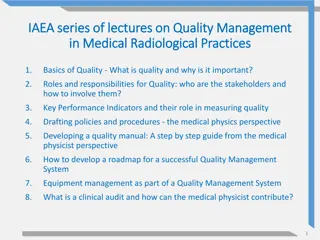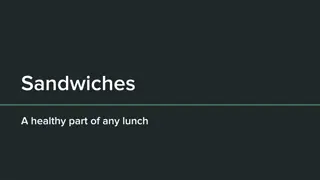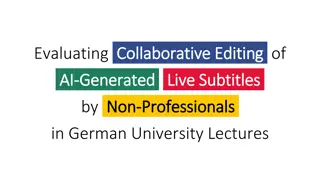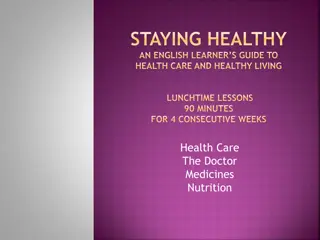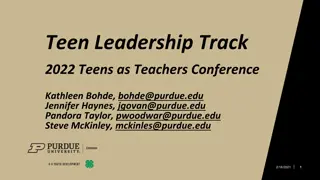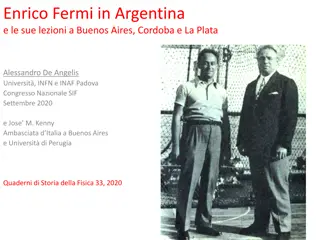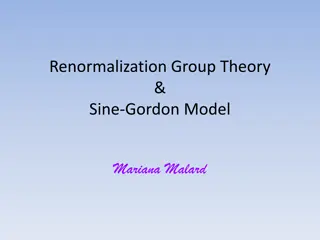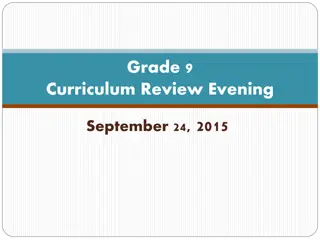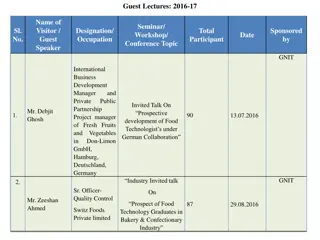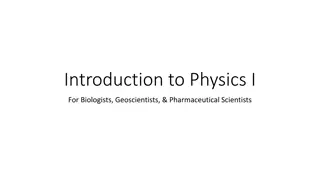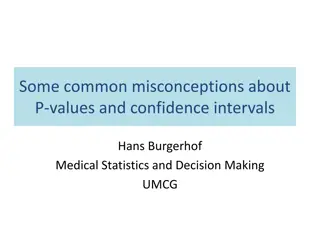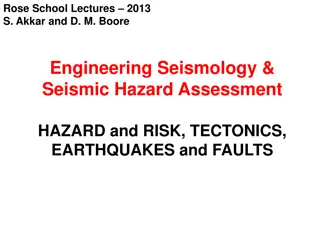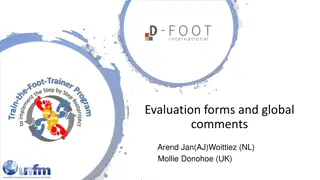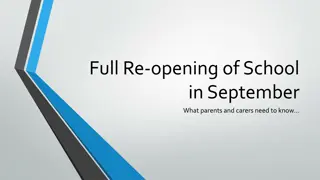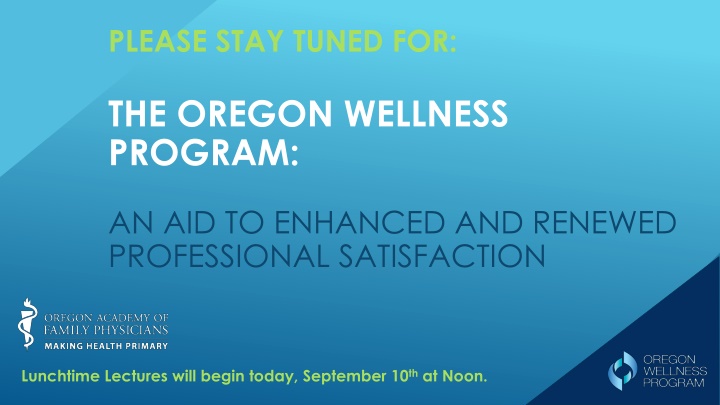
The Oregon Wellness Program and Professional Burnout Dyamics
Explore the Oregon Wellness Program designed to enhance professional satisfaction and combat burnout among healthcare professionals. Learn about the history of burnout, its prevalence, and the destructive force it poses in healthcare settings. Discover key insights and strategies to address burnout effectively.
Download Presentation

Please find below an Image/Link to download the presentation.
The content on the website is provided AS IS for your information and personal use only. It may not be sold, licensed, or shared on other websites without obtaining consent from the author. If you encounter any issues during the download, it is possible that the publisher has removed the file from their server.
You are allowed to download the files provided on this website for personal or commercial use, subject to the condition that they are used lawfully. All files are the property of their respective owners.
The content on the website is provided AS IS for your information and personal use only. It may not be sold, licensed, or shared on other websites without obtaining consent from the author.
E N D
Presentation Transcript
PLEASE STAY TUNED FOR: THE OREGON WELLNESS PROGRAM: AN AID TO ENHANCED AND RENEWED PROFESSIONAL SATISFACTION Lunchtime Lectures will begin today, September 10that Noon.
DONALD E. GIRARD, MD, MACP Emeritus Professor of Medicine, Division of General Internal Medicine, School of Medicine - OHSU, Portland, OR Chair, Executive Committee, Oregon Wellness Program I have no relevant financial relationships to disclose.
REMEMBER: The Oregon Wellness Program (OWP): (oregonwellnessprogram.org/ph: 541-242-2805) Burnout: A Brief History Burnout as a destructive force for health care professionals The inherent conflict among health care professionals: Caring for patients vs Caring for one self The OWP: A Brief History The OWP: Access Counseling: Diagnosis and Management OWP Outcomes to date (9-2020) Client Survey Outcomes (4-2020) Example of Resilience Self Teaching Questions and comments from your colleagues COURSE OBJECTIVES
H. J. Freudenberger: Burnout: High Cost For High Achievement: 12 steps, including excess need to succeed, inability to compromise, increasing attention to success and giving up personal interests Christina Maslach s definition as Occupational Disorder with markers: A. Professional Exhaustion; B. Depersonalization; C. Inability to appreciate professional accomplishments Medicine as Profession: +/- for much of history; but in US a Golden Era from WWII through 1970s The profession becomes industrialized: 1970s to present BURNOUT: Professional burnout rates rise from: less than 20% in 1980; about 33% in 2000; to more than 50% present A BRIEF HISTORY Primary care, emergency medicine and select subspecialties the most; pathology and dermatology the least; Family Physicians high! Precipitants: Industry replaces profession (wealth for health); professional loss of control; worker bees; technology and information overload; regulatory requirements explosion (certification, recertification, credentialing, governmental requirements, preauthorization, etc) EPIC and other electronic medical record systems became the straw that broke the camel s back: while established to serve the physicians, it became the system s payment tool and requires more time per practitioner than direct patient care OUTCOME: Professional Burnout
Burnout Prevalence among all US Physicians 2020: @ 50% An Occupational Health Disorder identified by three characteristics: Professional Exhaustion Depersonalization: (cynicism, anger, disrespect) Inability to appreciate success in one s professional life All lead to bad care; bad relations; somatic complaints, bad behavior, attrition from practice; depression and suicide PROFESSIONAL BURNOUT AS A DESTRUCTIVE FORCE
Outcomes of burnout: Unhappy and dissatisfying professional lives Poor relationships with patients, colleagues, friends, supervisors, others Bad patient care and bad patients outcomes Attrition from profession Bad behavior (gateway to alcohol and substance abuse, boundary breaches, poor cognition, chronic, unforgiving somatic complaints (headaches, back pains, etc), depression, suicide PROFESSIONAL BURNOUT AS A DESTRUCTIVE FORCE CONTINUED
Caring for Patients: the Mantra instilled from the beginning of medical education, increasing through graduate medical education and sustained through one s practice life: Your patients come first, always!!!! Caring for Self: Ignored during medical education, completely displaced during graduate medical education and never recovered during professional careers Thus health care professionals are frequently not as well as they can be in their professional lives; AND IF THEY ARE NOT AT THEIR BEST, THEY CANNOT PROVIDE THE BEST PATIENTS CARE UNDERSTANDING THE PROFESSIONALS INHERENT CONFLICT BETWEEN CARING FOR PATIENTS VS CARING FOR SELF
2014 the Oregon Wellness Coalition is organized 2016 An Executive Committee is formed and has the authority to manage the program Four chapters are established at medical society sites: MSMP, LCMS, MPCMS, COMS, and Medford and one pending Psychologists and psychiatrists respected for expertise in treating physicians are recruited and vetted to provide counseling services in these five sites THE OWP: BRIEF HISTORY 2018 Formal Contract ratified by all site directors bring programs under the umbrella of the OWP to develop together, receive and give financial support and share expertise 2018 The Foundation for Medical Excellence partners with the OWP as its fiduciary and becomes the seat of financial recruitment THE PRODUCT: Voluntary counseling services for all OR licensed physicians, physician assistants and advanced nurses; confidential, no records, no referrals, no tracking, all free and 8 per year, 48-72 hours wait time; in person or telemedicine visits Financial support has now been received from health care systems, legislative approval of licensee fees use, individual donations
The Program is accessible live during usual work hours or thru voice mail all other times; crisis line available at all times Website: oregonwellnessprogram.org or phone: 541-242-2805 Operator from Cascade Health (Eugene) answers and asks only for name and contact phone number Operator reviews request from caller and together identity the mental health provider best suited for him/her; in his/her locale or anywhere in the state; in person visit or via telemedicine Currently 20 mental health providers are available (Psychiatrists, PsyDs, PhDs, or MSW/LSWs) THE OWP: ACCESS
The Client: Health care professionals represent a continuum; from well and inquisitive, to flirting with un-wellness, to impaired; to crisis! Through initial counseling sessions, mental health provider diagnoses individual s state of burnout. The initial diagnosis allows the mental health provider to focus treatment on the problem; or for some identify referral sources who are more able to care for the individual s need Goal is to facilitate increased personal insight; establish a work plan to address the problem and with that improved satisfaction; refreshed professional investment and enjoyment. COUNSELING DIAGNOSIS AND MANAGEMENT
Over 1350 client visits; majority in person but increased telemedicine Average visit number 3.5++ per individual (and increasing) Most common age range 41-50 years; more women than men (2/1) Research Pilot Study Results very positive about professional value OWP STATISTICS TO DATE 6-2020
Universally helpful (95%) Comments about the program: Helpful (95%); helps personally (93%); change in life (90%); made one or more change in life (88%) CLIENT SURVEY OUTCOMES Quality of life improved with more visits 4-2020 Symptoms of burnout decrease with increased visits Most recent data reveal help with COVID concerns, from spring 2020
Simple, effective techniques so that your body thoughts and motions work as a well functioning team One breath reset: Use a single breath to shift your body and mind to optimal state Power recharge: Use a 1 minute breathing technique to recharge your physician and mental reserves Values: Identify your values and train your body to help you live up to them Habits: Learn skills for creating helpful habits Wise mind: Use the breath to tune into wise, helpful thoughts Emotional intelligence: Experience your emotions as a source but not control of information Social skills: Listening to learn - use your breath and thinking skills to understand the other person Social skills: Learn how to reach agreement on what is important and improve teamwork Maintaining Energy: Create habits using breath, attention, thoughts, and behavior to keep your energy high Continuous improvement: Use mental rehearsal to increase successful actions EXAMPLES OF RESILIENCE SELF TEACHING HTTPS://WWW.URSUSPROGRAM.COM
How do I maintain compassion and empathy in delivering efficient patient care and be present for family when coming through the door at home? How do I feel good about tackling patient problems in a fast-paced clinical care setting without becoming a magnet for difficult cases that anyone can solve? What are some rewarding milestones in the arc of a physician s career? What are some of the common modifiable factors that lead to dissatisfaction when looking back on a career? QUESTIONS FROM YOUR COLLEAGUES What is a simple tool or easy to use parameter(s) for self check in on wellness? Discuss coping strategies, managing anxiety. Ways to build/enhance(ment) resilience. With increase amount of time working from home, how can I re-learn to disconnect from work when home? For family physicians working in larger health systems, wellness committees and employee assistance programs are already in place to provide resources. They are not used. Resources available in OR for family physicians confidential, voluntary only and free is OWP. I strongly second the topic of insidious work creep and maintaining/establishing appropriate boundaries we are always busy and often thinking of work-related things outside of clinic/office time, but this has run amok during COVID-19
Thank you for joining us today for the first in our Lunchtime Lecture Series. Upcoming topics include: Bag of Worms or Teachable Moment: The Role of Family Physicians in Addressing Unhealthy Alcohol Use Social Determinants of Health & Health Justice: A Vision for Action Social Determinants of Health: From Theory to Practice Each of these webinars has been approved for 1.00 AAFP Online Only, Live AAFP Prescribed Credit.


